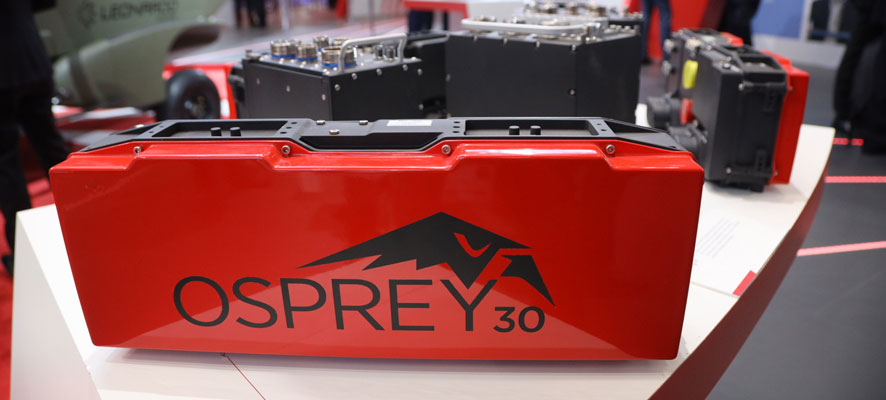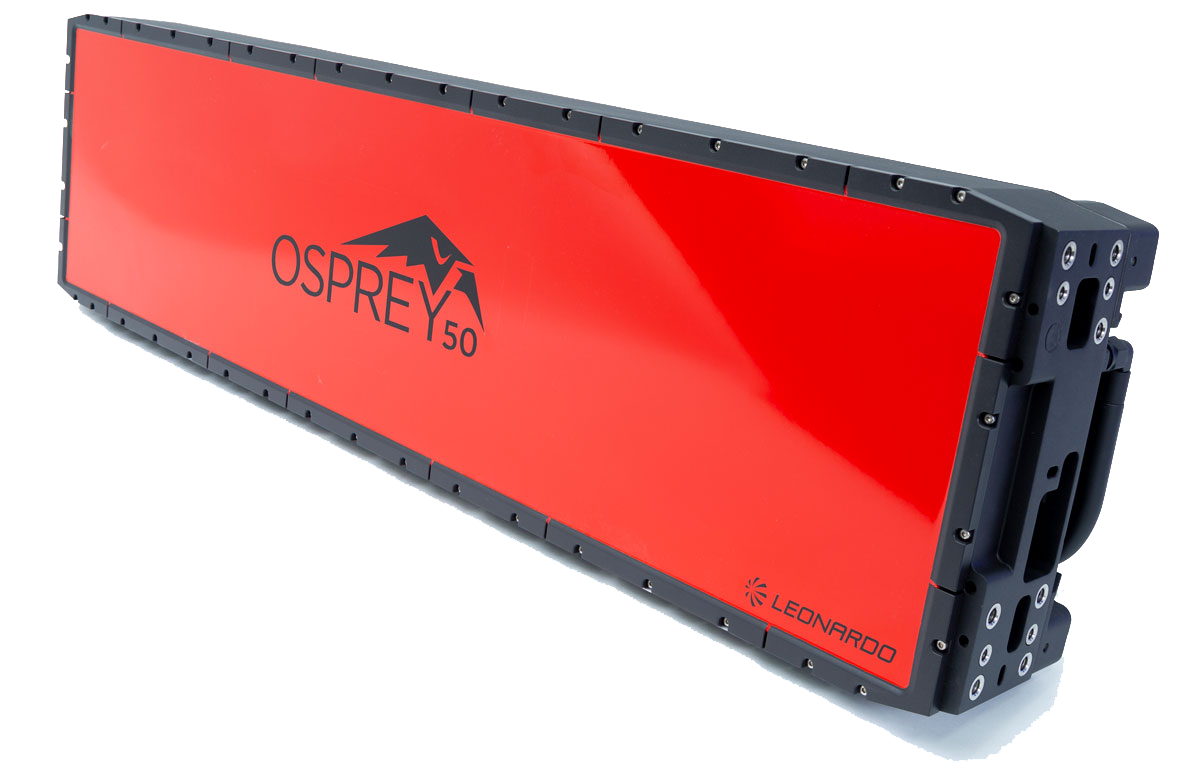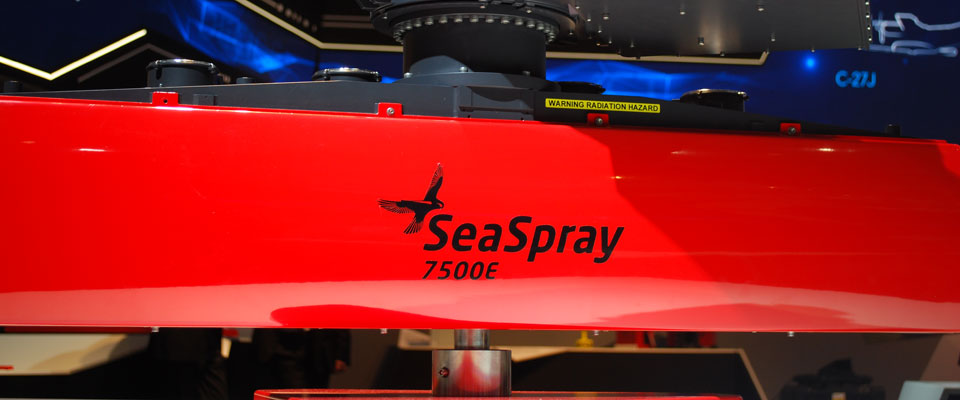Leonardo continues to pioneer AESA radar technology for the surveillance radar market segment and there is constant internally-funded development work that looks at how the company can evolve its AESA technologies for all types of airborne platforms and missions.
This work not only looks at how to expand the capabilities and mission sets that existing AESA radars can perform – primarily through ‘back end’ software upgrades – but also how operators can integrate AESA arrays onto both crewed and uncrewed platforms in new and innovative ways that were not possible before. This ensures not only flexibility for the customer, but also that they get the best value for money and utilisation from each platform.
Investing in the future – the Osprey family
Leonardo has been at the forefront of AESA radar development for over three decades and has led the market shift away from specialised radars for specific missions to multi-role and multi-domain radars that can be used across various tasks.
As a result of this and internal R&D investments, Leonardo developed the Osprey 30 and Osprey 50 AESA radars, which have seen significant demand in the defence market.

“The Osprey radar series has taken the best of breed in terms of our background with Seaspray in the maritime domain, PicoSAR in the land domain, and fire control radars in the air-to-air domain, and brought that all together to a family of radars that could be tasked in those multiple different domains,” explained Neil Shoulder, who leads Leonardo’s radar capability team.
That has resulted in a new type of airborne intelligence, surveillance and reconnaissance (ISR) platform that can perform multiple tasks and missions.
“Now you can have aircraft that are much more flexible in terms of the missions they can undertake,” said Shoulder. “The big benefit with AESA is multitasking and being able to do multiple things at the same time, which you cannot do with M-Scan because their beams are always in that one place. With AESA, it’s much more flexible in how you can interleave different modes of operation.”
Software plays an integral role here, and Leonardo has developed its radar hardware so that it can be constantly improved by iterating, refining and updating the software over the technology’s lifecycle. “Software is critical, it’s what defines the radar system,” explained Shoulder.
Leonardo continues to regularly invest in radar software updates that improve both functionality and capability for end users, including automating tasks and reducing operator workload.
Easing integration for customers
The flexibility and ease of integrating Osprey onto a platform has been a key differentiator for Leonardo, and this approach has been very successful as it allows a customer to pick the optimal radar, configuration, and software-defined waveforms and modes for their aircraft and missions.
The ‘front end’ antenna could be on a gimbal, in a pod, or as fixed panels, and the choice between different-sized arrays on the Osprey 30 and 50 also enhances this flexibility further for the customer.
The ‘back end’ of the radar system has also been standardised so that radars such as the Osprey and Seaspray share common parts, and there has been a wider effort to leverage commercial-off-the-shelf (COTS) components for cost efficiencies and better upgradability and obsolescence management.
Additionally, Leonardo’s AESA radars are able to easily plug into a preferred HMI or mission system via ethernet, once again showcasing the versatility of these sensors.
Exploring the realms of possibility
It should come as no surprise that integration on platforms such as twin turboprops and business jets have been a popular choice for Leonardo’s surveillance AESA customers.
This is expected to continue for years to come owing to the benefits that these aircraft have for all types of ISR missions, such as payload, endurance and range.
As an example, both Australia and Italy will operate Gulfstream G550-based Airborne ISR and Electronic Warfare (AISREW) aircraft integrated with Osprey 50 radars.
Most recently SNC has chosen Osprey 50 for their RAPCON-X ISR aircraft.

But the advantages of AESA that have been highlighted above, such as configuration flexibility, common architecture, and ease of integration, means that there are a growing number of new platforms and new concepts of operation that Leonardo radars such as Osprey will enable.
One important area for many customers is fleet optimisation, and ensuring that forces get the most from their limited number of in-service aircraft. ISR aircraft are often in short supply, so being able to re-role other aircraft rapidly to perform these specialist missions can have significant operational impact.
In 2023, Marshall Aerospace unveiled its ARC-Radar solution for the C-130 Hercules transport aircraft. This is a role-fit palletised solution that leverages two Osprey 30 radar arrays, two modified paratrooper doors containing ultra-low-profile conformal radome, a rear pallet with two articulated radar mounts and line-replaceable unit (LRU) rack, and a forward pallet containing a mission management console.
Marshall Aerospace’s solution requires no modification to the C-130 and can be fitted within a few hours, meaning that the aircraft can be transporting troops one day, and providing ISR for commanders the next.
Uncrewed opportunities
The increasing number of uncrewed aerial vehicles (UAVs) in service, particularly as ISR platforms, has also seen an increase in demand for powerful, yet SWaP-friendly sensors.
Once again, this is an area where Leonardo’s AESA radars excel and have the operational experience to prove it. Take for example the successful integration of the Osprey 30 on the US Navy’s MQ-8C Fire Scout, which has given the service a persistent maritime ISR capability that can detect and track targets from ranges that would not have previously been possible, even in poor weather conditions.

The integration of Seaspray 7500E onto the General Atomics MQ-9B SeaGuardian is another example of Leonardo’s successful UAV sensor pedigree, especially in the maritime domain.
Leonardo continues to work with OEMs on integrating its radar technologies into uncrewed platforms, ensuring that the cost of integration for end users is minimised and the overall solution is optimised for that specific platform. In the future, there may be other uses for Leonardo AESA radars on uncrewed vehicles, which may include sensing around a platform for collision risks, often known as ‘sense and avoid’. This is a key future requirement for UAVs – especially large systems operating in civilian airspace – and will ensure that potential collisions are avoided and safety is maintained.
Conclusion
Leonardo’s pioneering work on AESA surveillance radars has transformed the airborne ISR market, and the company’s ongoing development work in this space continues to provide improvements to customer capabilities. The future is certainly bright for AESA radars as new capabilities and platforms are leveraged, including UAVs, that will give end users significantly enhanced ISR functions.




